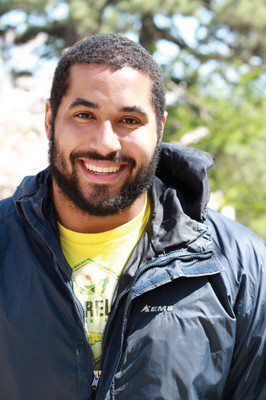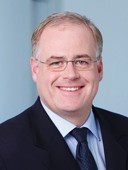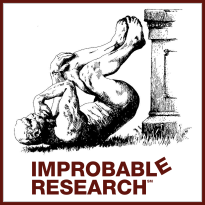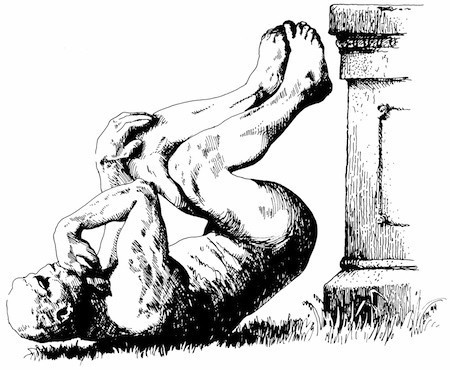Marc Abrahams's Blog, page 340
March 21, 2015
Professional Football Player by Day, Spectral Graph Theorist by Night
 John Urschel is not your ordinary National Football League offensive lineman. He may be a professional football player by day, but by night he is a spectral graph theorist (and numerical linear algebraist). His latest paper has now been accepted for publication in Journal of Computational Mathematics. Urschel announced via Twitter that his paper had been officially accepted for publication. (Based on my googling, the final version of the paper hasn’t yet appeared.)
John Urschel is not your ordinary National Football League offensive lineman. He may be a professional football player by day, but by night he is a spectral graph theorist (and numerical linear algebraist). His latest paper has now been accepted for publication in Journal of Computational Mathematics. Urschel announced via Twitter that his paper had been officially accepted for publication. (Based on my googling, the final version of the paper hasn’t yet appeared.)
Here is the paper’s abstract as it appears in the preprint:
In this paper, we develop a cascadic multigrid algorithm for fast computation of the Fiedler vector of a graph Laplacian, namely, the eigenvector corresponding to the second smallest eigenvalue. This vector has been found to have applications in fields such as graph partitioning and graph drawing. The algorithm is a purely algebraic approach based on a heavy edge coarsening scheme and pointwise smoothing for refinement. To gain theoretical insight, we also consider the related cascadic multigrid method in the geometric setting for elliptic eigenvalue problems and show its uniform convergence under certain assumptions. Numerical tests are presented for computing the Fiedler vector of several practical graphs, and numerical results show the efficiency and optimality of our proposed cascadic multigrid algorithm.
You can read a draft of Urschel’s paper, called A Cascadic Multigrid Algorithm for Computing the Fiedler Vector of Graph Laplacians, on the arXiv preprint server. I just wish that he used his current affiliation on the paper, because that would have been fantastic.
(Thanks to investigator Francis Su for bringing this to our attention.)
Bonus: Many other famous people who are more traditionally associated with non-scientific walks of life have also contributed to science. The people on this list include Danica McKellar, Natalie Portman, Mayim Bialek, and Hedy Lamarr.
Another Bonus: Using the MathSciNet website for examining publication paths between mathematical scientists, you can see that John Urschel’s Erdős number is at most four.
A Third Bonus: Here is Urschel’s academic website at Penn State. He previously published a paper about a topic in celestial mechanics. Urschel also has at least one more paper on spectral graph theory.
March 20, 2015
Strategies and tactics for ironic subversion
If you’ve ever made use of the simile “About as useful as knickers on a kipper” then, knowingly or not, you could have been indulging in a spot of ironic subversion. Dr Tony Veale BSc MSC PhD, who is a the Principal Investigator of the Creative Language System Group at University College Dublin School of Computer Science and Informatics, discusses such phrases in a chapter of the 2013 book Developments in Linguistic Humour Theory, xiv, pp. 321–340, Dynel, Marta (ed.) part III, New theoretical approaches to established forms of humour. It’s titled : ‘Strategies and tactics for ironic subversion’
“
Ironic descriptions subvert the norms of descriptive language. Norms have highly salient exemplars – shared stereotypes – on which speakers can draw to create a vivid description, but ironic speakers instead construct their own counter-examples, often identifying exceptional cases where the standard inferences do not hold. One can thus hone one’s facility for irony by studying the ironic descriptions of others. Indeed, specific tactics for implementing a particular strategy for irony can be acquired by observing how others use words to subvert our own expectations. In this chapter we provide the computational foundations for uniting these ideas into a single analytical framework.”
As part of the chapter, Dr. Veale provides an extensive list of similes which take the form “About as useful as […]”, some familiar, some not quite so :
Some examples (from an original list of 20,299) “About as useful as :
● A chocolate teapot
● A fish on a bicycle
● Knickers on a kipper
● Handles on a banana
● An inflatable dart board
● Knees on a fish
● An ashtray on a motorcycle
● A coalman on a maglev monorail
Ironic subverters (and others) will find many many more in the chapter, which can be read in full here :
BONUS: Dr. Veale and colleagues have also created an online facility called ‘Idiom Savant’ – which is “a linguistic magnet for finding the sharpest needles in the haystacks of the internet.” Go here and input your query…
A complete list of the group’s current projects can be found here.
Ig Nobel show at Imperial College London, Fri eve
The 2015 Ig Nobel EuroTour descends Friday evening, March 20, on Imperial College. Here are details:
IMPERIAL COLLEGE LONDON, London, UK, Friday, March 20. The Great Hall, Sherfield Building, South Kensington Campus. 6:00 pm. (TICKETS.) Featuring: Marc Abrahams; Dr. Nakamats (Ig Nobel winner, photographing every meal he has consumed over a period of 43 years); Sabine Begall and Pascal Malkemper (Ig Nobel winners, Documenting that when dogs defecate and urinate, they prefer to align their body axis with Earth’s north-south geomagnetic field lines); Minna Lyons (Ig Nobel winner, Relation between night owls and psychopathy); (Luxuriant Flowing Hair Club for Scientists Man-of-the-Year) Richard Webb (Tribute to John Hoyland , the father of Nominative Determinism – with a special appearance by Dr. Roger Kneebone , professor of surgical education); QI/ Museum of Curiosity researcher/performers James Harkin , Dan Schreiber , Stevyn Colgan (dramatic readings from bizarre, genuine research studies); Andrew George (Recitation of bad poetry by the bad poet William Topaz McGonagall )
Tickets have been fully booked for a while now. But… there is always the chance that a few ticket holders will not turn up, freeing up their seats. So if you have not booked a ticket, you might want to take your chances and turn up fifteen minutes or so before the event begins, and perhaps, perhaps you will be able to get a ticket.
BONUS: Dr. NakaMats discusses his ideas for better ideas
BONUS: The complete tour schedule.
Enabling Blue-Light-Inducible Penile Erection in Switzerland
One of the first — perhaps the very first — papers about enabling blue-light-inducible penile erection in Switzerland has just been published.
The paper is:
 “A Synthetic Erectile Optogenetic Stimulator Enabling Blue-Light-Inducible Penile Erection,” Taeuk Kim, Marc Folcher, Marie Doaud-El Baba and Prof. Martin Fussenegger [pictured here], Angewandte Chemie, epub Mqrch 18, 2015. (Thanks to Ig Nobel Prize winner Len Fisher for bringing this to our attention.) The authors, at ETH Zurich, Switzerland, Institut Universitaire de Technologie, IUTA, France, and the University of Basel, Switzerland, report:
“A Synthetic Erectile Optogenetic Stimulator Enabling Blue-Light-Inducible Penile Erection,” Taeuk Kim, Marc Folcher, Marie Doaud-El Baba and Prof. Martin Fussenegger [pictured here], Angewandte Chemie, epub Mqrch 18, 2015. (Thanks to Ig Nobel Prize winner Len Fisher for bringing this to our attention.) The authors, at ETH Zurich, Switzerland, Institut Universitaire de Technologie, IUTA, France, and the University of Basel, Switzerland, report:
“We thank Thomas Horn for generous advice with sperm microscopy…. An erectile optogenetic stimulator (EROS), a synthetic designer guanylate cyclase producing a blue-light-inducible surge of the second messenger cyclic guanosine monophosphate (cGMP) in mammalian cells, enabled blue-light-dependent penile erection associated with occasional ejaculation after illumination of EROS-transfected corpus cavernosum in male rats. Photostimulated short-circuiting of complex psychological, neural, vascular, and endocrine factors to stimulate penile erection in the absence of sexual arousal may foster novel advances….”
March 19, 2015
“Morning People” Are More Punctual in the Morning, Sometimes
Do “night owls” arrive late to evening events less often than “habitual early risers” do? That has has yet to be tested.
A seemingly opposite question drives a new study — that tested who is punctual for morning events and who is not:
“Morningness as a Personality Predictor of Punctuality,” Laura Werner, Jennifer Geisler, Christoph Randler, Current Psychology, March 2015, Volume 34, Issue 1, pp 130-139. The authors, at the University of Education, Heidelberg, Germany, explain:
“Punctuality depends on situational factors but seems also a personality trait. Here, we assessed arrival time at a university course (behavioural measure) and punctuality with a self-report measure in relation to morningness-eveningness. We observed arrivals of students in their courses during the first lessons (starting at 8:15). 267 students (43 men, 222 women, 2 not specified) with a mean age of 22.76 ± 3.89 years participated in this study…. Morning oriented and conscientious students scored higher on punctuality.”
BPS Research Digest has a short essay about this new study.
March 18, 2015
Improbable Research Podcast #3: Michael Jackson Surgery
 Surgery to make someone look like Michael Jackson dominates this week’s Improbable Research podcast.
Surgery to make someone look like Michael Jackson dominates this week’s Improbable Research podcast.
The podcast is all about research that makes people LAUGH, then THINK — research about anything and everything, from everywhere —research that’s good or bad, important or trivial, valuable or worthless. CBS distributes it, both on the new CBS Play.it web site, and on iTunes.
Podcast #3: Michael Jackson Surgery
LISTEN on iTunes or Play.it. (Or DOWNLOAD it, and listen later)
SUBSCRIBE (to receive a new episode, FREE, every week) on iTunes or Play.it.
This week, Marc Abrahams tells about:
Michael Jackson surgery. (Mommaerts, M. Y., J. S. Abeloos, and H. Gropp (2001). ‘Mandibular Angle Augmentation with the Use of Distraction and Homologous Lyophilized Cartilage in a Case of Morphing to Michael Jackson Surgery.’ Annales de Chirurgie Plastique et Esthetique 46 (4): 336–40. / N. A. (1996). ‘Michael Jackson at Beth Israel: Handling Press, Fans, Gawking Employees.’ Hospital Security and Safety Management 16 (12): 10–11.])
Cat rolling. (Feldman, Hilary N. (1994). ‘Domestic Cats and Passive Submission.’ Animal Behaviour 47 (2): 457–59. / Baerends-Van Roon, J. M., and G. P. Baerends (1979). The Morphogenesis of the Behaviour of the
Domestic Cat. Amsterdam: North-Holland Publishing. / Corbett, L. K. (1979). ‘Feeding Ecology and Social Organization of Wildcats (Felis silvestris) and Domestic Cats (Felis catus) in Scotland.’ PhD thesis, University of Aberdeen.)
Name hazards of Bobbing. (Lea, Melissa A., Robin D. Thomas, Nathan A. Lamkin, and Aaron Bell (2007). ‘Who Do You Look Like? Evidence for the Existence of Facial Stereotypes for Male Names.’ Psychonomic Bulletin & Review 14 (5): 901–7. / English, G. (1916). ‘On the Psychological Response to Unknown Proper Names.’ American
Journal of Psychology 27: 430–34.)
Hop, skip, and reach conclusions. (Burton, Allen W., Luis Garcia, and Clersida Garcia (1999). ‘Skipping and Hopping of Undergraduates: Recollections of When and Why.’ Perceptual and Motor Skills 88: 401–6. / Farley, Claire T., Reinhard Blickhan, Jacqueline Saito, and C. Richard Taylor (1991). ‘Hopping Frequency in Humans: A Test of How Springs Set Stride Frequency in Bouncing Gaits.’ Journal of Applied Physiology 71 (6): 2127–32. / Austin, G. P., G. E. Garrett, and D. Tiberio (2002). ‘Effect of Added Mass on Human Unipedal Hopping.’ Perceptual and Motor Skills 94 (3): 834–40. / Austin, G. P., D. Tiberio, and G. E. Garrett (2002). ‘Effect of Frequency on Human Unipedal Hopping.’ Perceptual and Motor Skills 95 (3): 733–40. / Austin, G. P., D. Tiberio, and G. E. Garrett (2003). ‘Effect of Added Mass on Human Unipedal Hopping at Three Frequencies.’ Perceptual and Motor Skills 97 (2): 605–12.)
Bored meetings. (Luong, Alexandra, and Steven G. Rogelberg (2005). ‘Meetings and More Meetings: The Relationship Between Meeting Load and the Daily Well-Being of Employees.’ Group Dynamics:
Theory, Research, and Practice 9 (1): 58–67. / Rogelberg, S. G., D. J. Leach, P. B. Warr, and J. L. Burnfield (2006). ‘“Not Another Meeting!” Are Meeting Time Demands Related to Employee Well-being?’ Journal of Applied Psychology
91 (1): 83–96.)
Humming in the key of bee. (Schneider. S. S., and Norman E. Gary (1984). ‘“Quacking”: A Sound Produced by Worker Honeybees After Exposure to Carbon Dioxide.’ Journal of Apicultural Research 23 (1): 25–30. / Gary, Norman E., and Kenneth Lorenzen (1981). ‘Bee Vacuum Device and Method of Handling Bees.’ US Patent no. 4,288,880. / Gary, Norman E. (1959). ‘The Case of Utter vs. Utter.’ Gleanings in Bee Culture 87 (6): 336–37. / N. A. (1901).‘Bees in Court: History of the Celebrated Case of Peach Utter versus Bee-Keeper Utter.’ Rocky Mountain Bee Journal 1 (1): 6.)
Hot potato voice. (Bhutta, Mahmood F., George A. Worley, and Meredydd L. Harries (2006). ‘“Hot Potato Voice” in Peritonsillitis: A Misnomer.’ Journal of Voice 20 (4): 616–22. / Bhutta, Mahmood F., and Harold Maxwell (2008). ‘Sneezing Induced by Sexual Ideation or Orgasm: An Under-Reported Phenomenon.’ Journal of the Royal Society of Medicine 101: 587–91.)
The mini-opera “What’s Eating You”, Act 2. (The opera premiered as part of the 2014 Ig Nobel Prize ceremony. It starred Maria Ferrante and Scott Taylor, with Patrick Yacono on piano and Thomas Michel on accordion. Karen Hopkin narrates. Also starring the Microbe Chorus: Kelsey Calhoun, Nicholas Carstoiu, Delphine Gabbay, Paul Goodwin, Clia Goodwin, Erika Hutchinson, Andrew B. Jones, Julia Lunetta, Sylvia Rosenberg, Daniel Rosenberg, Abby Schiff, Ted Sharp, and Nobel laureates Carol Greider, Rich Roberts, Frank Wilczek, and Eric Maskin.)
The mysterious Bruce Petschek did the sound engineering.
Ben Pascoe joins Luxuriant Facial Hair Club for Scientists (LFHCfS)
Ben Pascoe has joined the Luxuriant Facial Hair Club for Scientists (LFHCfS). Guillaume Méric, who nominated him, says:
Dr Ben Pascoe is a researcher in microbial ecology and genomics at the College of Medicine of Swansea University in Wales. The fluffiness, density, aspect, smell, soft texture and speed of growth of his beard is equalled only by few while envied by most. Every day that, in a moment of weakness, he decides to trim it or shave it off, a little je-ne-sais-quoi dies in the heart of his covetous but respectful entourage. This phenomenal physiological advantage gives Dr Pascoe a keratinistic gravitas which contributes to the greatness of his research, collaborative endeavours and general aura.
Ben Pascoe, Ph.D, DPhil, LFHCfS
Postdoctoral research assistant
Head of Sequencing (Swansea Genome Centre)
Swansea Centre Manager (MRC CLIMB Consortium)
Institute of Life Science
College of Medicine, Swansea University
Swansea, UK

What was that Again?: Decay of Attention in Science
The only thing in science than may be even more prominent than the data deluge is the paper deluge: there is an increasingly large number of scholarly (and “scholarly”) journals, and an ever-increasing wealth of papers to fill them. Clearly, this calls for a paper to analyze the situation.
In a new study on the arXiv preprint server, a team of scientists at Aalto University School of Science in Finland and Hewlett Packard Enterprise Labs in California have examined the decay of attention in science. To start their abstract, they write:
The exponential growth in the number of scientific papers makes it increasingly difficult for researchers to keep track of all the publications relevant to their work. Consequently, the attention that can be devoted to individual papers, measured by their citation counts, is bound to decay rapidly. In this work we make a thorough study of the life-cycle of papers in different disciplines.
Scientists, just like everybody else, have finite attention spans. For example, a network scientist (such as study coauthor Santo Fortunato) might want to cite one of the latest papers on community structure rather than an “old” one from 2007. With the growing deluge of papers, scientists are drowning in an ever deeper pool. However, it seems that “when time is counted in terms of the number of published papers, the rate of decay of citations is fairly independent of the period considered.” This shorter life-cycle of scholarly papers thus seems to be a result of the deluge of papers rather than inherently shorter attention spans among scientists.
Bonus (tangentially related): Although most papers tend to get most of their citations early on in their lives, there are notable exceptions. One interest case, which is well-known to several of the authors of this new study, is a certain infamous 1970s paper about a karate club that has exploded in citation count since 2002 and has spawned the most coveted award in network science.
Patients prefer robots (to tablets)
If you were obliged to receive healthcare instructions from a machine rather than a human, which would you prefer, a robot or a tablet?
‘People respond better to robots than computer tablets delivering healthcare instructions’ say a team from the Department of Psychological Medicine, and the Department of Electrical and Computer Engineering, at The University of Auckland, New Zealand in Computers in Human Behavior, Volume 43, February 2015, Pages 112–117.
• We compared responses to a robot with responses to a computer in a health context.
• Participants spoke and smiled more towards the robot than the tablet.
• Participants were more likely to follow relaxation instructions when given by the robot.
• The robot was rated more favourably and more likeable than the tablet.
• Robots can offer advantages over a computer tablet in healthcare.
Bonus cartoon: [partially related]
March 17, 2015
Nominative Determinism: A. Pothecary, the pharmacist
At last night’s Ig Nobel show at the University of Portsmouth, an audience member responded to New Scientist features editor Richard Webb‘s talk about Nominative Determinism. Today, that audience member send this follow-up note:
You are unlikely to remember, but I made a comment following the talk on Nominative Determinism. I referred to a Pharmacy student we had at Portsmouth, a Mr. A. Pothecary.
I have looked him up on the register of Pharmacists, and . Sadly, there is only one A. Pothecary on the Pharmacist register.
Regards,
Dr. Tim Mason
Visiting Lecturer in Medical Microbiology
School of Pharmacy and Biomedical Sciences
University of Portsmouth
Andrew Pothecary is scheduled to speak at the Clinical Pharmacy Congress in London, in April.
Mr. Pothercary is a popular fellow, having been profiled last year by journalist W.B. Miles in The West Briton:
The most apt name in Britain? Mr A Pothecary the pharmacist
A medical expert from Truro could have the most appropriate name for his profession in the country.
Mr A Pothecary – whose first name is Andrew – is a specialist pharmacist at the Royal Cornwall Hospital. An apothecary is the historical term for a medical professional who dispensed medicines to doctors, surgeons and patients.
Mr Pothecary said he had enjoyed considerable success in his career but believed he might have been turned down for some pharmaceutical jobs when employers thought the name on the application form was an attempt at humour. “I’ve always been attracted to scientific stuff and I thought of doing something in biochemistry or medicine,” he said….
NOMINATIVE DETERMINISM BONUS: The University of Portsmouth’s School of Pharmacy and Biomedical Sciences has a senior lecturer named Michael Leech.
Marc Abrahams's Blog
- Marc Abrahams's profile
- 14 followers




